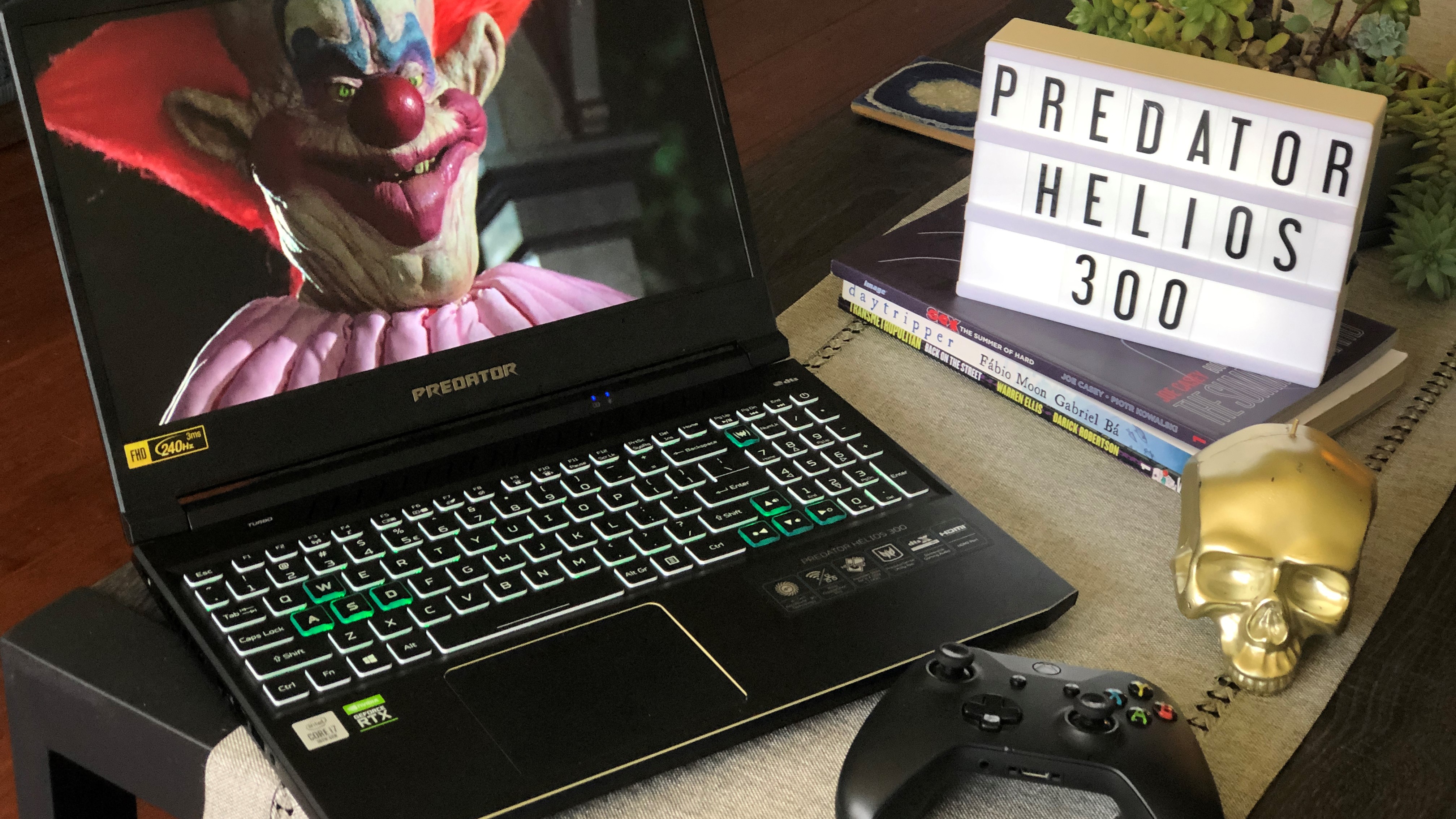Our Verdict
The Predator Helios 300 gives us high-end gaming performance at a mid-range price.
For
- Great Price
- Speedy 240Hz display
- Solid Gaming Performance
- Room for three storage drives
Against
- 512GB SSD
- Average CPU performance
PC Gamer's got your back
The Acer Predator Helios 300 has always been a great entry-to-mid-level gaming laptop, thanks to its focus on the sweet spot between performance and price. That's why it's been consistently featured as one of the best gaming laptops over the last few years. The 2020 updated model brings a 240Hz display and some minor, but welcome, aesthetic changes while keeping the costs per frame to a manageable level.
With the release of Nvidia's newest RTX 30-series of graphics cards, RTX 20-series laptops are in an interesting position because we won't have these new powerful GPUs showing up in laptops any time soon (at least not until well into 2021). So if you're banking on playing Doom Eternal at a ridiculously high frame rate, you're may have to wait a little longer.
This year's Predator Helios 300 boasts a 15-inch $1,500 config with the latest Intel Core i7 CPU, 16GB RAM (expandable to 32GB), 512GB SSD, 240Hz 1080p IPS panel display, and an RTX 2070 Super with Max Q Design.
The chassis for 2020's Helios 300 got some minor updates, with the most noticeable being the power adapter now plugs into the back of the machine as opposed to the side, which is a welcome change.
Another thing which struck me is that the Predator branding is now only located on the inside of the laptop. I get it; some people might be a little self-conscious using a laptop with the word 'Predator' on it in public. It's okay, the blue accents will still let people know that you're a gamer, so no worries there.
The metal cover with anodized finish gives the Helios a more sturdy feel than previous years, though I would have loved to have seen it all over the laptop instead of just the cover.
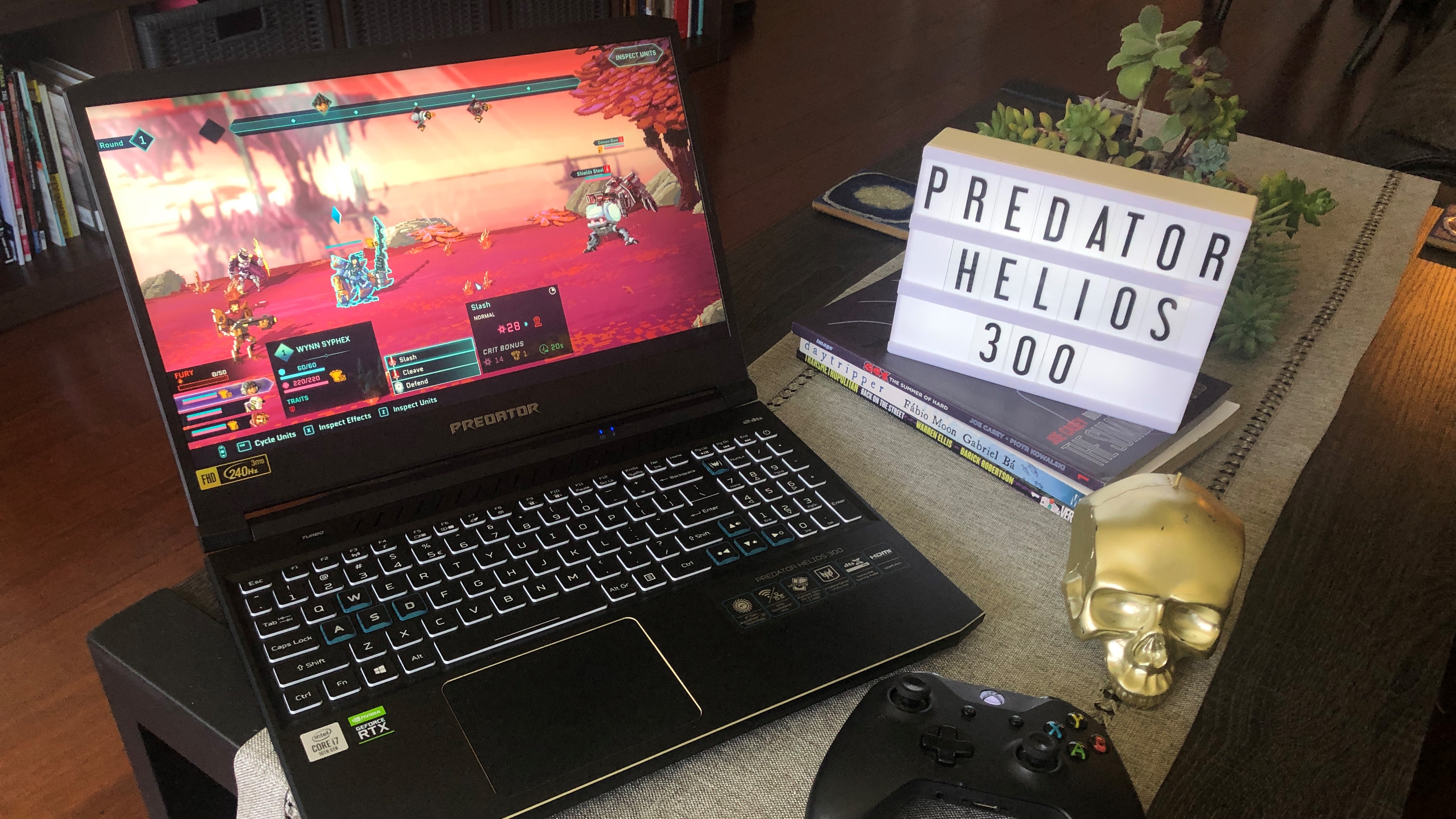
Price: $1,499
Processor: Intel Core i7-10750H (6 core)
Graphics: Nvidia RTX 2070 with Max-Q Design
Memory: 16GB dual-channel DDR4
Display: 15.6-inch 1080p IPS,
Refresh rate: 240Hz
Storage: 512GB PCIe NVMe
Battery: 59Wh
Connectivity: 1 x USB Type C, 3 x USB 3.2, 1 X HDMI 2.0, 1 x miniDP, 1 x ethernet, 1 x headphone
OS: Windows 10 Home/Professional 64 Bit
Dimensions: 14.31" x 10.04" x .90"
Weight: 5.51lbs
Warranty: One year with 24/7 dedicated support line
The see-through keycaps make the 4-zone RGB lighting really pop and I like how the WASD and arrow keys can be highlighted using Predator Sense, Acer's software for controlling lighting, overclocking, fan control, etc.
The stock 512GB SSD is frankly pretty small considering the size of games these days, especially considering it's the only storage available. You'd be lucky to fit both Red Dead 2 and Call of Duty: Modern Warfare on there with your Windows install. The Helios 300 does have available slots for two SSDs and an HDD so upgrading down the road only requires a screwdriver and a decent-sized storage drive.
The $1,500 price puts it in the middle of the pack between mid-tier gaming laptops like the budget warrior Dell G5 15 SE and the pricey Asus Zephyrus G14. Though it's worth pointing out that the Helios' game performance really punches above its weight class by keeping pace with the Asus G14 in almost every category for a few hundred dollars cheaper.
The CPU performance doesn't really shock me. The Intel Core i7-9750H CPU has fairly reliable scores of 1275 CB on Cinebench R15 and 5182 on Geekbench 5, making it roughly on par with the half dozen Intel systems we've tested this year. This means Helios 300 is more than ready to handle the most common CPU-intensive tasks like video and photo editing.
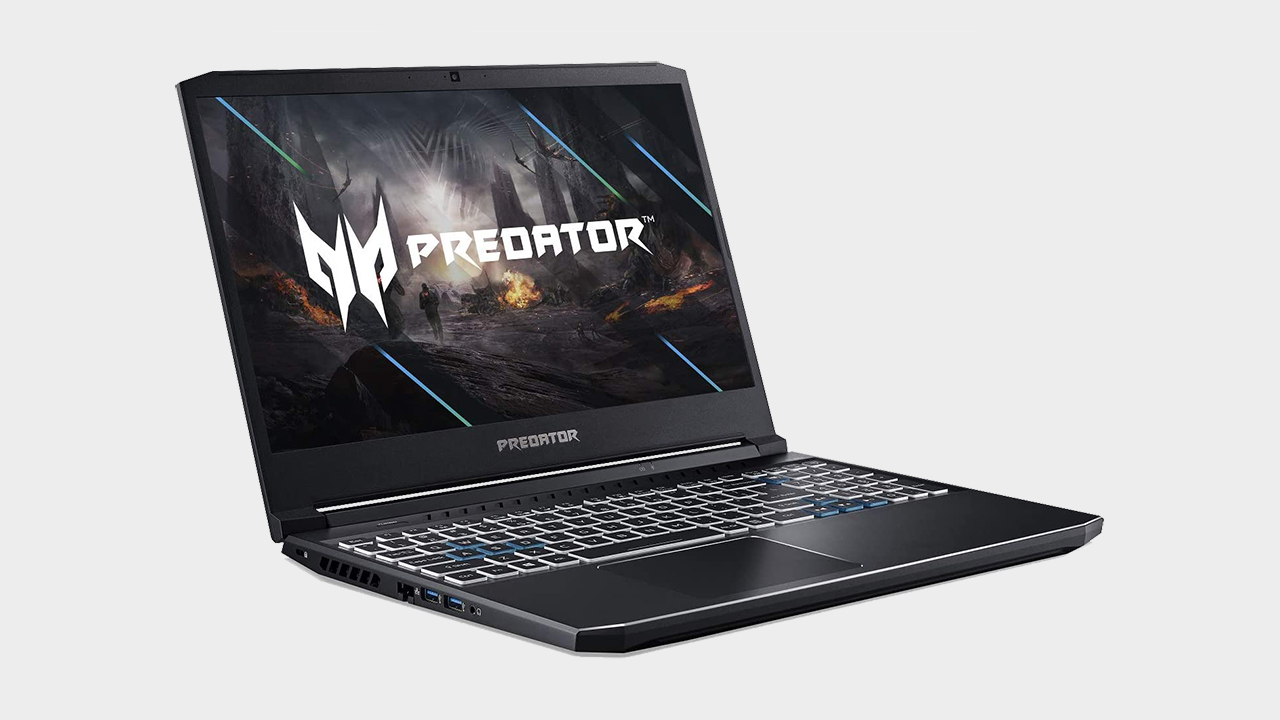
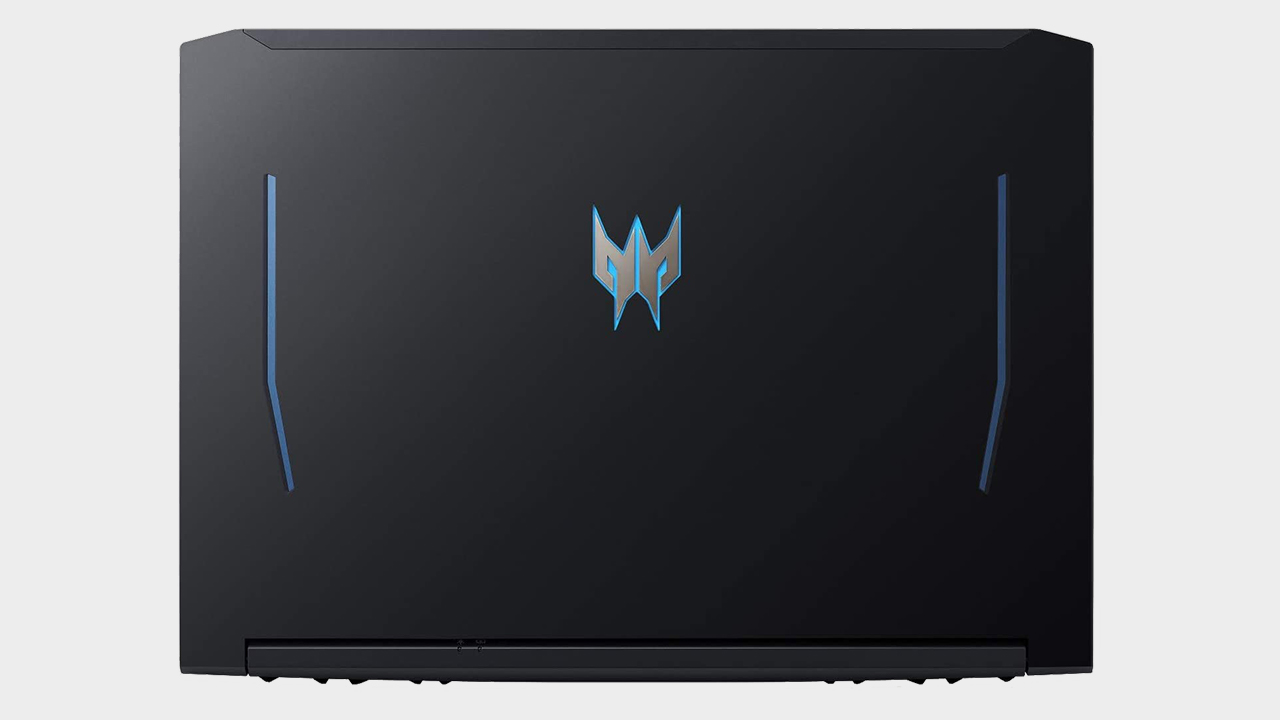
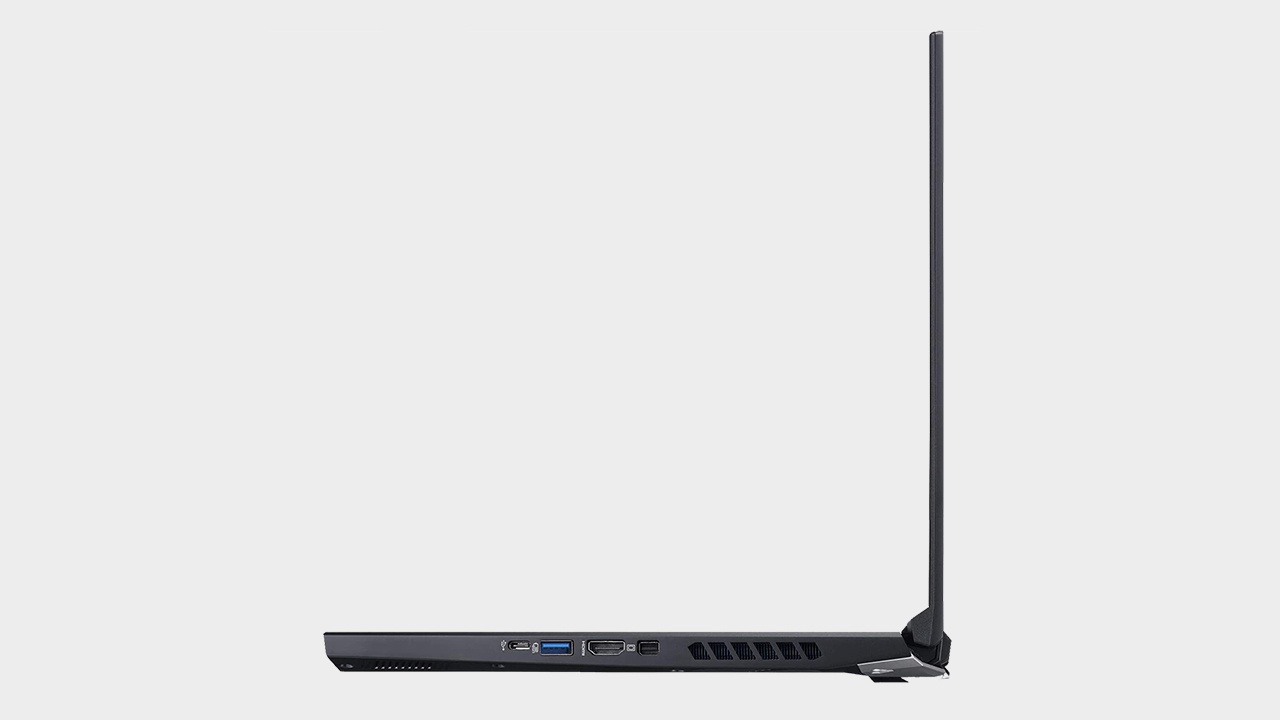
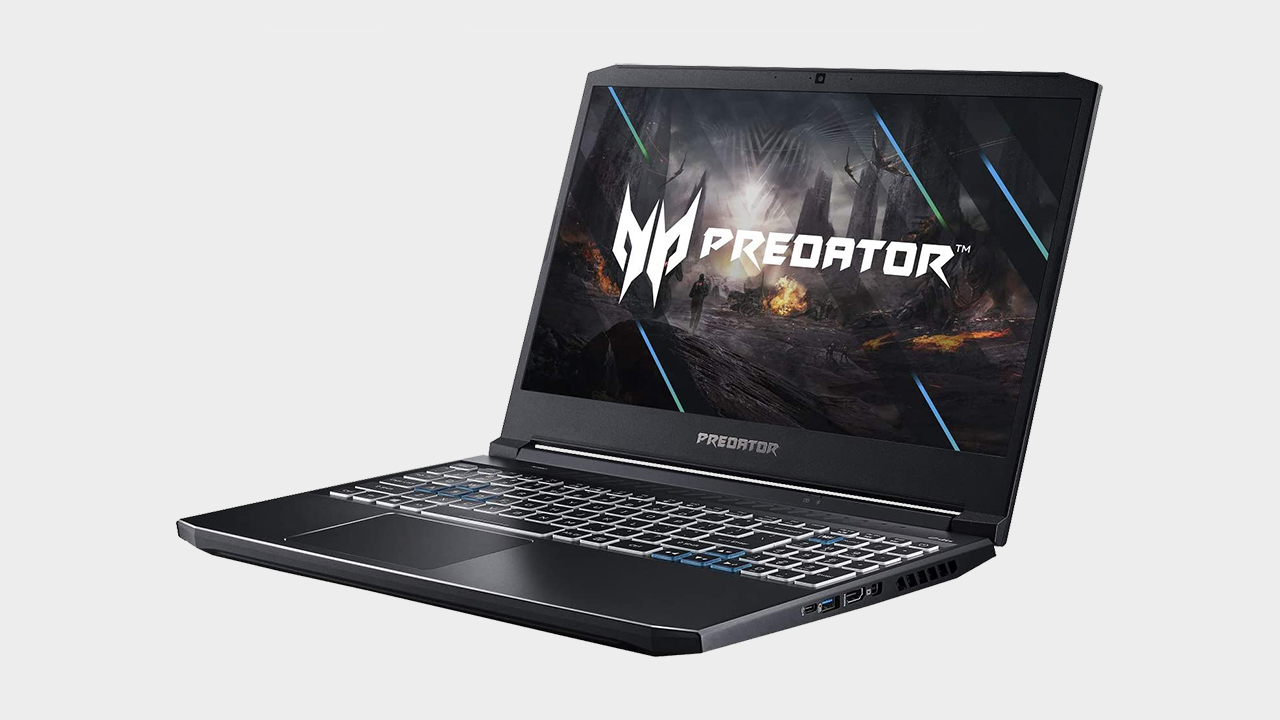
Cinebench R20: 2980 cb (multi-core) 417 cb (single-core)
Geekbench 5: 6165
CrystalDiskMark Q32 Sequential (Read): 3,131 MB/s
CrystalDiskMark Q32 Sequential (Write): 2,317MB/s
PCMark 10 Express: 5121 points
x264: 50 fps
Metro Exodus (1080p Ultra): 74 fps
Far Cry: New Dawn (1080p, Ultra): 86 fps
Gears Tactics (1080p, Ultra) : 105 fps
Division 2: 68 fps
Total War Troy: 75 fps
Shadow of The Tomb Raider
3DMark Fire Strike: 15,391 points
Battery Life (gaming): 1 hour 56 minutes (Gaming)
Speaking of gaming, we got decent numbers from the 2070 Max-Q with ray-tracing turned on, delivering 42fps in Metro Exodus and 54fps for Shadow of the Tomb Raider. The Helios 300 also did well running traditional rasterized games too, topping 75fps on Total War Saga: Troy and hitting almost 70fps on Division 2.
If you're desperate for just that little bit of extra gaming performance, and hang the sense of it—or the sound and fury of it—the Turbo button is Acer's one-touch GPU overclocking feature. The Predator laptops have this simple feature designed to eke out as much extra gaming performance as possible.
In theory it's a neat feature but, much as we saw with the Predator Triton earlier this year, you really only get about a 1-3% increase in performance. It also makes your system run very hot and distractingly loud. Honestly, I really don't think it's worth it unless you're truly militant about maximizing your frames per second. Or have a really good noise-cancelling gaming headset.
But for its $1,500 sticker price the 15-inch Predator Helios 300 provides high-end 1080p gaming performance at a mid-range price. Even without the dubious utility of the Turbo button. The design changes are small but smart (like the power cord in the back instead of the side), having room for three storage drives (2x SSD, 1x HDD) is handy, and the price/performance ratio is great. And that all makes the latest Acer Helios 300 a strong contender for one of the best gaming laptops out there this year.
The Predator Helios 300 gives us high-end gaming performance at a mid-range price.

Jorge is a hardware writer from the enchanted lands of New Jersey. When he's not filling the office with the smell of Pop-Tarts, he's reviewing all sorts of gaming hardware, from laptops with the latest mobile GPUs to gaming chairs with built-in back massagers. He's been covering games and tech for over ten years and has written for Dualshockers, WCCFtech, Tom's Guide, and a bunch of other places on the world wide web.
